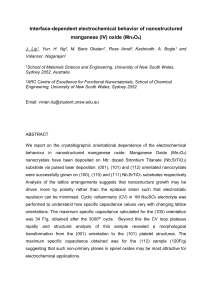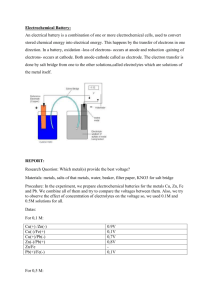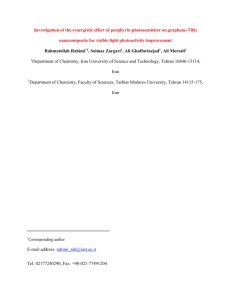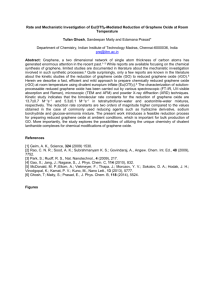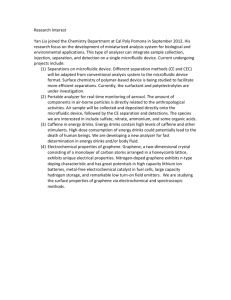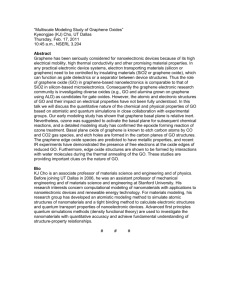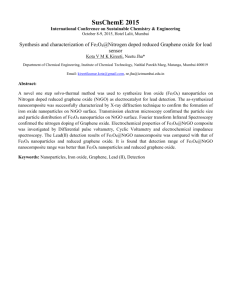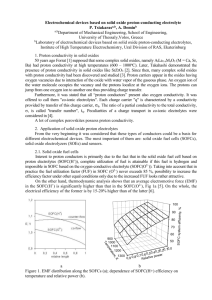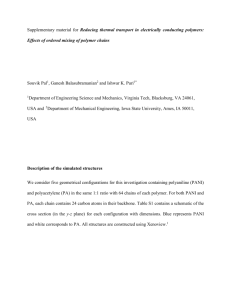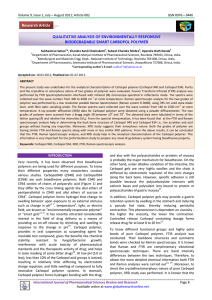A rechargeable Zn/Poly aniline-Graphene oxide nano composite
advertisement
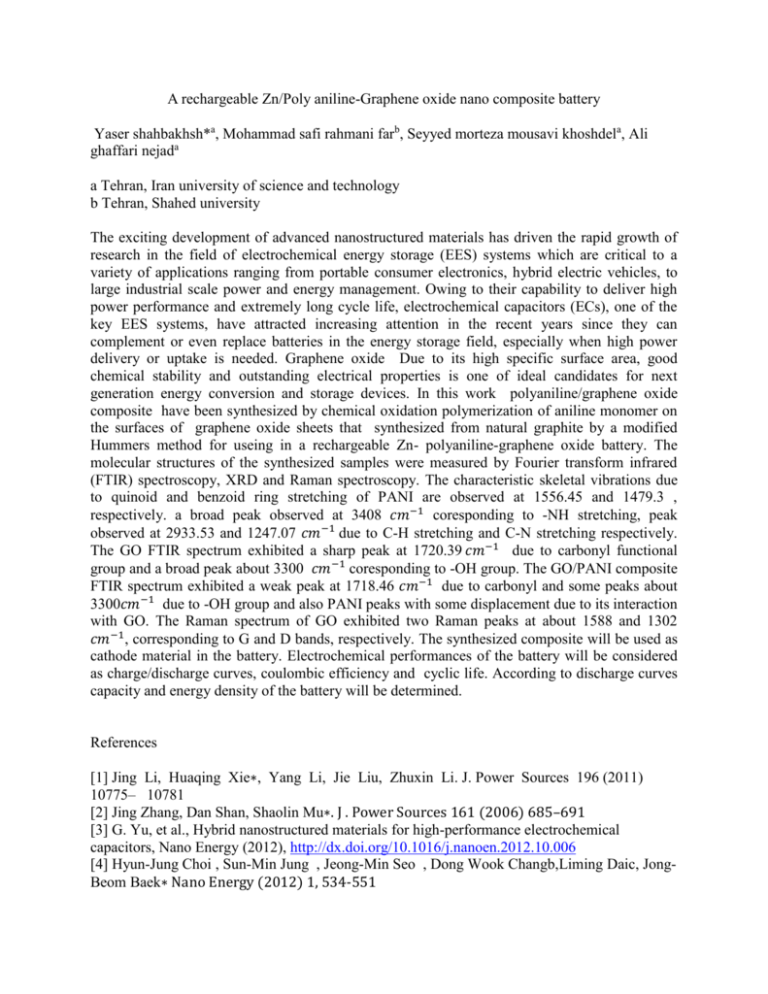
A rechargeable Zn/Poly aniline-Graphene oxide nano composite battery Yaser shahbakhsh*a, Mohammad safi rahmani farb, Seyyed morteza mousavi khoshdela, Ali ghaffari nejada a Tehran, Iran university of science and technology b Tehran, Shahed university The exciting development of advanced nanostructured materials has driven the rapid growth of research in the field of electrochemical energy storage (EES) systems which are critical to a variety of applications ranging from portable consumer electronics, hybrid electric vehicles, to large industrial scale power and energy management. Owing to their capability to deliver high power performance and extremely long cycle life, electrochemical capacitors (ECs), one of the key EES systems, have attracted increasing attention in the recent years since they can complement or even replace batteries in the energy storage field, especially when high power delivery or uptake is needed. Graphene oxide Due to its high specific surface area, good chemical stability and outstanding electrical properties is one of ideal candidates for next generation energy conversion and storage devices. In this work polyaniline/graphene oxide composite have been synthesized by chemical oxidation polymerization of aniline monomer on the surfaces of graphene oxide sheets that synthesized from natural graphite by a modified Hummers method for useing in a rechargeable Zn- polyaniline-graphene oxide battery. The molecular structures of the synthesized samples were measured by Fourier transform infrared (FTIR) spectroscopy, XRD and Raman spectroscopy. The characteristic skeletal vibrations due to quinoid and benzoid ring stretching of PANI are observed at 1556.45 and 1479.3 , respectively. a broad peak observed at 3408 𝑐𝑚−1 coresponding to -NH stretching, peak observed at 2933.53 and 1247.07 𝑐𝑚−1 due to C-H stretching and C-N stretching respectively. The GO FTIR spectrum exhibited a sharp peak at 1720.39 𝑐𝑚−1 due to carbonyl functional group and a broad peak about 3300 𝑐𝑚−1 coresponding to -OH group. The GO/PANI composite FTIR spectrum exhibited a weak peak at 1718.46 𝑐𝑚−1 due to carbonyl and some peaks about 3300𝑐𝑚−1 due to -OH group and also PANI peaks with some displacement due to its interaction with GO. The Raman spectrum of GO exhibited two Raman peaks at about 1588 and 1302 𝑐𝑚−1, corresponding to G and D bands, respectively. The synthesized composite will be used as cathode material in the battery. Electrochemical performances of the battery will be considered as charge/discharge curves, coulombic efficiency and cyclic life. According to discharge curves capacity and energy density of the battery will be determined. References [1] Jing Li, Huaqing Xie∗, Yang Li, Jie Liu, Zhuxin Li. J. Power Sources 196 (2011) 10775– 10781 [2] Jing Zhang, Dan Shan, Shaolin Mu∗. J . Power Sources 161 (2006) 685–691 [3] G. Yu, et al., Hybrid nanostructured materials for high-performance electrochemical capacitors, Nano Energy (2012), http://dx.doi.org/10.1016/j.nanoen.2012.10.006 [4] Hyun-Jung Choi , Sun-Min Jung , Jeong-Min Seo , Dong Wook Changb,Liming Daic, JongBeom Baek∗ Nano Energy (2012) 1, 534-551 [5] Bharat Chandra Dalui, I N Basumallick & Susanta Ghosh∗ Indian journal of Chemical Technology Vol. 15, Novamber 2008, pp. 576-580

